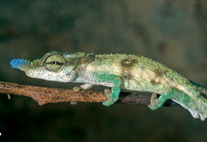Abstract
Phytoseiidae (Acari) is the best known family of predatory mites. Within this family, Euseius Wainstein is one of the largest genera. The species of this genus have generalist feeding behavior, including in their diet mites and pollen. Some studies have demonstrated the potential of certain Euseius species to control pest mites. Euseius concordis (Chant) has been mentioned in the literature as potentially useful for the control of the tomato russet mite, Aculops lycopersici (Tryon) (Eriophyidae). Several other American species are morphologically similar to E. concordis; the morphological variation of these species is poorly understood. The objective of this study was a taxonomic re-evaluation of E. concordis and of the world species most similar to it. Measurements of species collected in this study and a taxonomic key to separate the species of this group are provided. Morphological evaluations confirmed that Euseius flechtmanni Denmark & Muma is a junior synonym of E. concordis, and determined that Euseius caseariae De Leon is also a junior synonym of E. concordis, that Euseius ho (De Leon) and Euseius brazilli (El-Banhawy) are junior synonyms of Euseius mesembrinus (Dean) and that Euseius vivax (Chant & Baker) is not a junior synonym of Euseius fructicolus (Gonzalez & Schuster), as previously thought.

